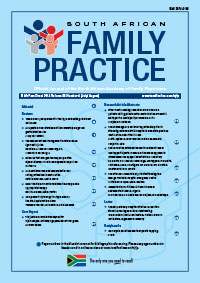The correlation between the health-related fitness of healthy participants measured at home as opposed to fitness measured by sport scientists in a laboratory
Keywords:
noninvasive measurements, physical fitness, pedometer, VO<sub>2</sub>max
Abstract
Background: Fitness is defined in the health context as a state of good health or physical condition, primarily as a result of exercise and proper nutrition. Conventional methods of measuring fitness are expensive, time consuming and require specialised methods. There is a need for noninvasive, fast methods of assessing health-related fitness and activity in athlete and non-athlete populations. The aim of this study was to establish any correlation between participants’ self-assessed health-related fitness (HRF) index and the HRF index determined by sports scientists, as well as the laboratory-assessed HRF index and maximum oxygen uptake (VO2max) determined by sports scientists via direct methods in a laboratory, and finally, to determine any potential correlation between an activity-recall questionnaire (Kasari) and VO2max. Method: The participants consisted of 169 male and female volunteers between the ages of 18 and 55 years, taking neither supplements nor medication. The University of Pretoria’s HRF index protocol was first carried out by participants on their own at home, and then in the laboratory under the supervision of sport scientists. The complete datasets of 150 participants were statistically analysed to establish correlations. Results: The results indicated highly significant and substantial correlations (ρ = 0.696, p < 0.001) between the participants’ self-assessed HRF index and measurements by the sports scientists. There were moderate correlations between the laboratory-assessed HRF index and the direct VO2max (ρ = 0.512, p < 0.005), as well as the indirect VO2max (ρ = 0.588; p < 0.001). A significant correlation was found between the self-assessed HRF index and the indirect VO2max (ρ = 0.454; p < 0.001). The Kasari questionnaire correlated only weakly with the indirect VO2max (ρ = 0.278, p < 0.002) and not at all with the direct VO2max (ρ = 0.072, p = 0.731). Conclusion: Indications are that this test protocol may be conducted at home by individuals, without supervision, to determine exercise ability or fitness, or to monitor changes in physical fitness, thereby limiting expenses and costs.
Published
2013-10-04
Section
Original Research
By submitting manuscripts to SAFP, authors of original articles are assigning copyright to the South African Academy of Family Physicians. Copyright of review articles are assigned to the Publisher, Medpharm Publications (Pty) Ltd, unless otherwise specified. Authors may use their own work after publication without written permission, provided they acknowledge the original source. Individuals and academic institutions may freely copy and distribute articles published in SAFP for educational and research purposes without obtaining permission.

